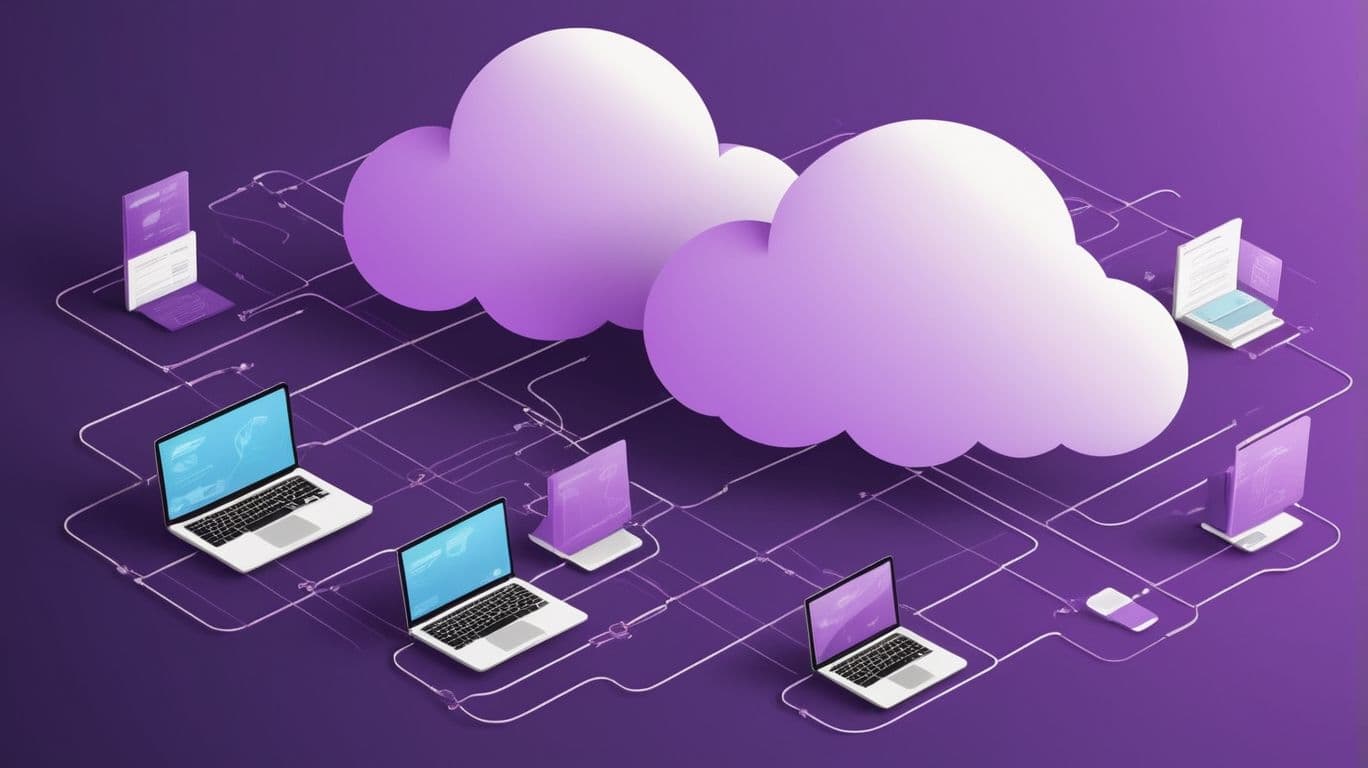
IMPLEMENTING OBSERVABILITY IN DISTRIBUTED CLOUD SYSTEMS
The implementation of observability in distributed cloud systems is a foundational necessity for ensuring system reliability and operational effectiveness.
Introduction
The implementation of observability in distributed cloud systems is a foundational necessity for ensuring system reliability and operational effectiveness. As cloud-native architectures become increasingly prevalent, the demand for rigorous monitoring, distributed tracing, and comprehensive logging becomes the highest priority.
1. Core Components of Observability: Metrics, Logs, and Traces
To achieve a deep understanding of system behavior, observability hinges on three key pillars
- Metrics: Quantitative measurements that reflect the performance state of a system. Metrics like CPU utilization, memory consumption, and request latency provide critical insight into resource usage and potential bottlenecks. Systems like Prometheus are widely adopted for metric collection and storage, thanks to their pull-based model and powerful query language (PromQL).
Prometheus Metrics Example
global:Grafana Visualization
scrape_interval: 15s
scrape_configs:
- job_name: 'node_exporter'
static_configs:
- targets: ['localhost:9100']{
"panels": [
{
"type": "graph",
"targets": [
{
"expr":"rate(http_requests_total[5m])",
"legendFormat": "{{status}}"
}
]
}
]
} - Logs: Sequential records of system events, offering a narrative of what transpired during operation. Structured logging is essential here; without it, logs can become unwieldy, making it difficult to parse and extract meaningful data. Log aggregation tools like Fluentd or ELK Stack (Elasticsearch, Logstash, Kibana) are instrumental in handling large volumes of logs and providing actionable insights.
Example of Structured Logging:{
"timestamp": "2024-09-04T12:00:00Z",
"level": "INFO",
"message":"User login successful",
"user_id": 12345,
"session_id": "abcde12345"
} - Traces: These represent the journey of a request as it traverses multiple services within a distributed system. Traces are indispensable for pinpointing performance degradation, as they reveal the intricate web of service interactions. Tools such as Jaeger or OpenTelemetry are pivotal in tracing, offering visibility into each step of the request lifecycle.
Distributed Tracing Example:from opentelemetry import trace
from opentelemetry.sdk.trace importTracerProvider
from opentelemetry.sdk.trace.export importBatchSpanProcessor, ConsoleSpanExporter
tracer_provider =TracerProvider()
trace.set_tracer_provider(tracer_provider)
span_processor = BatchSpanProcessor(ConsoleSpanExporter())
tracer_provider.add_span_processor(span_processor)
tracer = trace.get_tracer(__name__)
with tracer.start_as_current_span("request-span"):
# Code for handling request
2. Systematic Approach to Implementing Observability
Observability isn't a one-size-fits-all solution; it requires careful calibration to align with the architecture and operational goals of the system. Here's a step-by-step breakdown:
- Step 1: Define Observability Requirements
The first step is to articulate precise observability goals. This involves auditing the system to identify critical components that require close monitoring. For instance, in a microservices architecture, services that handle high traffic or sensitive data may warrant more detailed observability than peripheral services. - Step 2: Structured Logging
Implementing structured logging is non-negotiable. By adopting formats like JSON for log entries, you can ensure consistency and facilitate advanced querying. This approach significantly reduces the time spent on log analysis and accelerates the debugging process. - Step 3: Distributed Tracing
Enable distributed tracing across all services. Tracing tools should be integrated into the application's codebase, capturing context propagation and providing full visibility into the request's path. The use of trace IDs ensures that all logs, metrics, and traces can be correlated, offering a unified view of the system's health.
3. Tools and Techniques for Advanced Observability
To achieve a high level of observability, certain tools and methodologies are indispensable:
Prometheus and Grafana
Prometheus and Grafana are extensively used tools for monitoring and visualizing data in cloud-native environments. Prometheus excels in collecting and storing time-series metrics, while Grafana provides a sophisticated interface for visualizing these metrics. The combination allows for real-time monitoring and custom dashboards that reflect the current state of the system, highlighting trends and anomalies.
PromQL Query Example
rate(http_requests_total[5m])
Grafana Dashboard JSON Example
{
"dashboard": {
"panels": [
{
"type": "graph",
"targets": [
{
"expr": "rate(cpu_usage[5m])",
"legendFormat": "CPU Usage"
}
]
}
]
}
}
Jaeger for Distributed Tracing
Jaeger provides end-to-end visibility into how requests flow through the system. It captures trace data, which can be visualized to identify latencies, errors, and service dependencies. This is crucial for optimizing the performance of microservices architectures.
Jaeger Tracing Configuration
collector:
zipkin:
http-port: 9411
sampling:
strategies:
default_strategy:
param: 1
4. Best Practices for Alerting and Monitoring
Precision in Alerting
Not all issues require immediate attention. Configuring alerts should focus on critical thresholds—those that, when breached, signify a genuine problem. Avoid alert fatigue by ensuring that notifications are meaningful and actionable.
Prometheus Alert Configuration
groups:
- name: alert.rules
rules:
- alert: HighLatency
expr: latency_seconds > 0.5
for: 5m
labels:
severity: critical
annotations:
summary: "High latency detected"
Correlation of Data Sources
Establish a centralized observability platform that integrates metrics, logs, and traces. By correlating data from these sources, teams can gain a holistic understanding of the system's performance and identify root causes more effectively.
5. The Role of AI and ML in Observability
The integration of artificial intelligence (AI) and machine learning (ML) into observability practices is becoming increasingly common. AI/ML algorithms can automatically detect patterns and anomalies in data that might be missed by traditional monitoring. These technologies are particularly useful in predicting potential failures, enabling preemptive action and minimizing downtime.
6. Observability in the Nigerian Cloud Market
Given the explosive growth of cloud adoption in Nigeria, the strategic implementation of observability can significantly influence the success of tech products in the region. As businesses expand, the complexity of their systems escalates, making observability a critical factor for ensuring continuous reliability and optimal performance.
